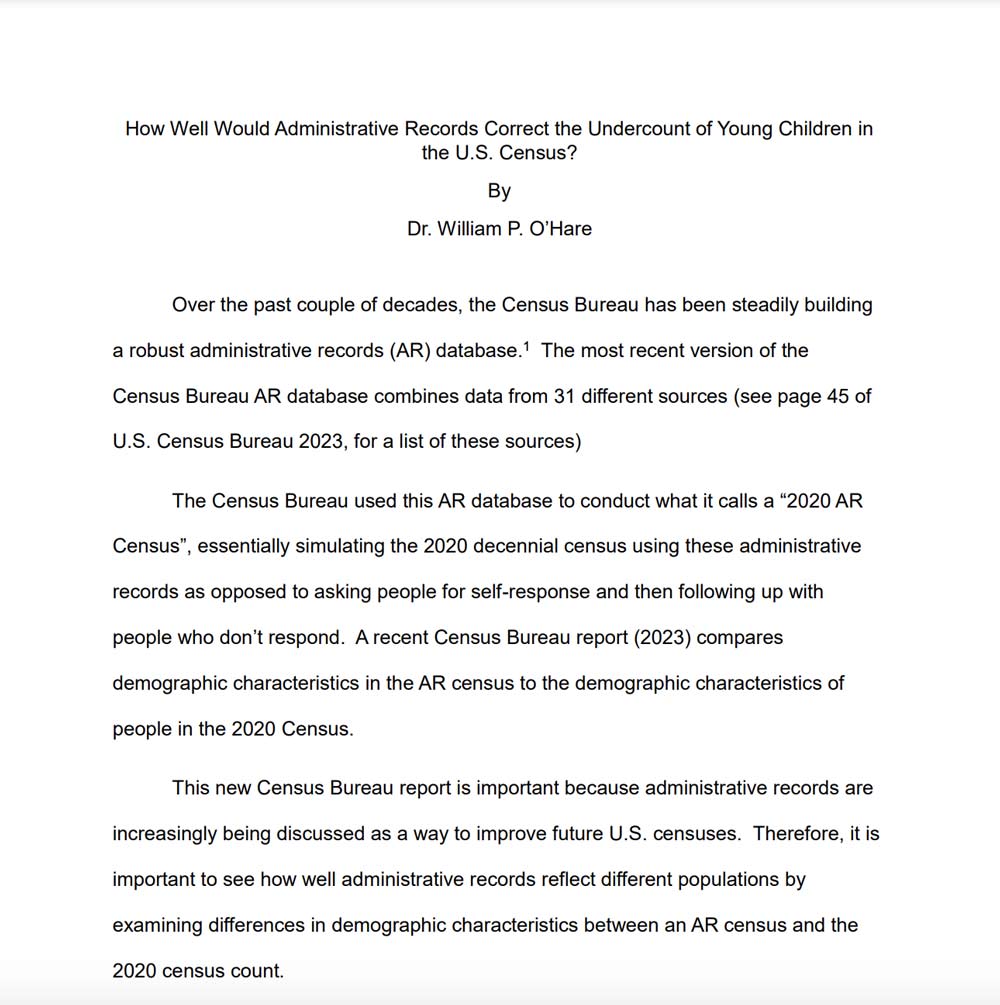Over the past couple of decades, the Census Bureau has been steadily building a robust administrative records (AR) database.[1] The most recent version of the Census Bureau AR database combines data from 31 different sources (see page 45 of U.S. Census Bureau 2023, for a list of these sources)
The Census Bureau used this AR database to conduct what it calls a “2020 AR Census”, essentially simulating the 2020 decennial census using these administrative records as opposed to asking people for self-response and then following up with people who don’t respond. A recent Census Bureau report (2023) compares demographic characteristics in the AR census to the demographic characteristics of people in the 2020 Census.
This new Census Bureau report is important because administrative records are increasingly being discussed as a way to improve future U.S. censuses. Therefore, it is important to see how well administrative records reflect different populations by examining differences in demographic characteristics between an AR census and the 2020 census count.
This paper draws on some data from that Census Bureau report to examine how the data from the AR census compares to the data from the 2020 census for young children, defined here as ages 0 to 5 (in Census Bureau jargon, children under age 1 are referred to as age “0”). The focus is on young children because that age group had the highest net undercount of any age group in the 2020 Census based on the Census Bureau’s Demographic Analysis. Also, better use of administrative records has been one proposal for reducing the undercount of young children in the 2030 Census.
This Census Bureau report helps answer the question about what the 2020 decennial census would have looked like if it had been based entirely on administrative records. This Census Bureau report also addresses how well administrative records reflect data for young children.









